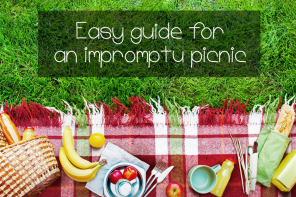Sometimes we waste without realizing it. Whether it’s a slice of bread, a banana or leftover lasagna, you’ve probably thrown food out this week, but not to worry – you’re not the only one!
According to Stats Canada, in Canada, an individual throws out up to 183 kg of food per year. This means about 123 kg of fruits and vegetables, 25 kg of cereal products, 16 kg of boneless red meat, 10 kg of boneless chicken, 6 kg of dairy products and 2.5 kg of fish according to Food Waste in Canada.
With the steady pace of life, sometimes we just can’t eat everything that we’ve bought for the week, so inevitably, some things end up in the garbage. Poor fridge and grocery planning can also mean food waste, so we’ve prepared an article that reveals several tricks that can help you minimize your daily food waste.
Food waste in Canada
In Canada, food waste costs $31 million per year. From production to the plate, waste occurs at various points in the food supply chain: in the fields, in transport, in production plants, at the grocery store, in restaurants and at home, but did you know that in the chain, consumers waste the most? In truth, 47% of food waste occurs at home. More concretely, that means $50 worth of food ends up in the garbage every week – or 1/3 of our grocery cart – but the good news is that we can reduce our footprint by doing little things.
12 tips to reduce waste at home
Did you know that our kitchen waste is 3 to 5 times more than what we estimate? Knowing that, what can we do to reduce our own food waste? Here’s a list of easy tips that can help you limit waste while enjoying food’s maximum freshness. You’ll see – simple actions in the kitchen and in your routine can make the world of difference.
Keep a grocery list on your fridge
Keep a grocery list and add the items you need as the week goes along. Not only will you avoid wasting, but you’ll save, too!
Before heading out to the grocery store, they say you should take inventory of what you have at home and add the products you’re missing to the list. This will help you avoid buying too much.
Make a meal calendar
Planning your weekly menu is a great habit to minimize food waste. Knowing what you’re going to eat will prevent you from buying unnecessary items that could end up in the garbage later. Think about snacks, lunch boxes, as well as main meals. Calculating the number of meals that won’t be eaten at home like at a restaurant or at a friend’s will also help you plan your grocery list.
You can also surf the net, read magazines and check grocery flyers to get ideas for quick and delicious recipe ideas to make.
Keep basic foodstuff in the pantry
Always have the basics like pasta, canned fish, rice, frozen veggies, legumes, etc. These products go great with leftovers.
Organize your fridge
To avoid loss, it’s important to check your fridge’s temperature which should be between 37° F and 40° F. The freezer should be between 0° F and 5° F. To facilitate air circulation, overstocking your fridge is not recommended. In fact, if air doesn’t circulate freely, cooling will not be as effective.
To maximize freshness, just follow a few simple rules when it comes to your food. Here’s an overview of how you should arrange food in your fridge:
Please note that some products, like potatoes, onions and tomatoes shouldn’t be refrigerated.
Finally, make sure to rotate the food in your fridge. The food that need be eaten quickly should be at the front. And don’t hesitate to do an inventory at least once a week to avoid oversights.
Freeze leftovers
Freezing food remains one of the most effective ways to minimize waste. Did you know that you can freeze almost anything with a few exceptions like eggs, soft cheese like ricotta and cottage, lettuce, potatoes and watermelon?
Tip: Freeze leftovers in individual serving sizes and label containers with the date.
Keep your fruit in the right place
To preserve fruit, make sure that you put them in the right spot. The fruit bowl isn’t necessarily the best place for all fruits.
For example, exotic fruit like pineapples, mangos and bananas come from hot countries, so it’s better to put them in a basket for optimal taste. The same goes for peaches, kiwi and apricots which lose a little taste when refrigerated. But beware of bananas that produce ethylene gas and can damage the other fruit in your basket!
On the other hand, go ahead and put strawberries, raspberries, apples and grapes in the fridge.
Use hermetically-sealed containers
If you make too much, don’t throw out the surplus. Instead, put them in hermetically-sealed containers in the fridge or freezer. These mini meals will undoubtedly make excellent lunches for the week or last-minute meals for busy nights. Remember – cook once, eat twice!
Invent new meals
One good way to avoid wasting is to make meals with leftovers. Ideally, do this towards the end of the week to really take advantage of what you’ll find in the fridge. With a few tomatoes, a can of tuna and some pasta, you’ll definitely be able to improvise a great ELITF. That’s short for Everything left in the Fridge!
If you’re looking for ideas on how to use up leftovers, there are quite a few sites that have empty-your-fridge recipes using the ingredients you already have.
Give new life to your food
The variety of recipes that you can cook with less-fresh food is incredible. Bananas for bread, apples for sauce, veggies for soups, bread for French toast, strawberries for jams, cream for sauces. See how food can provide a plethora of possibilities!
Cheese can also be slipped into lasagnas, as well as grilled cheese sandwiches, sandwiches, salads, quiche, omelettes, pizza and more!
Demystifying expiry dates
Check the expiry date before putting food in the garbage. Often we throw food out as soon as the date expires, but some food can be consumed even after the product is expired. They might have lost a little freshness, but can still be consumed.
Share your food
If you plan on being away for a few days and know you won’t be able to eat the food in your fridge, offer it to friends or bring it to work. You can even donate food to food banks especially if it’s non-perishable.
Install a mobile app to help reduce waste
Love Food, Hate Waste is a mobile app that can help you reduce waste in 2.0. In fact, this tool can measure good serving sizes to cook and recipes to use up leftovers. You can also use it to plan your weekly menu and grocery list. It’s available for iPhone and Android (in English only).
The anti-waste challenge for home
To motivate good anti-waste habits, we’ve prepared a small document that can help you follow your progress over the weeks. By understanding the impact and the nature of the food we throw out, we can then better manage our waste.
Complete the document and calculate your points every week (one point for each wasted item). The goal is to have the lowest number of points possible. We encourage you to share your results with us!
It’s possible to reduce the weight of our waste with small, simple, but very effective actions. Maybe you already do some at home? If so, what do you do?
















Great post! Quite informative and helpful too. I started recently trying to reduce my food waste and it goes very well. Found some great ideas and advises in your post to try. I’m definitely recommending this great information to my sister and to some friends too. Thanks for all this valuable information!
Hello Mrs Mason,
Thank you for your interest. We are pleased that you found this article useful.
Great article! Thank you